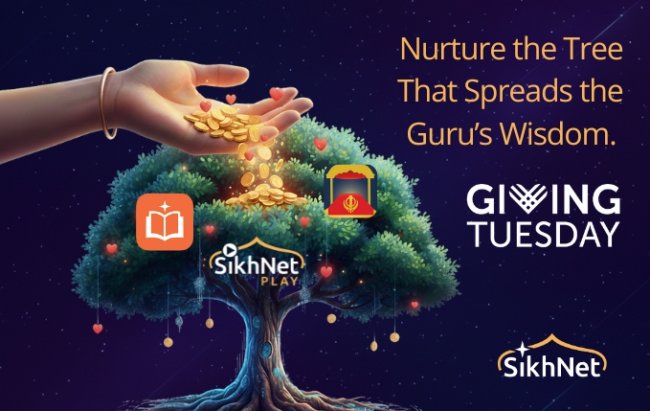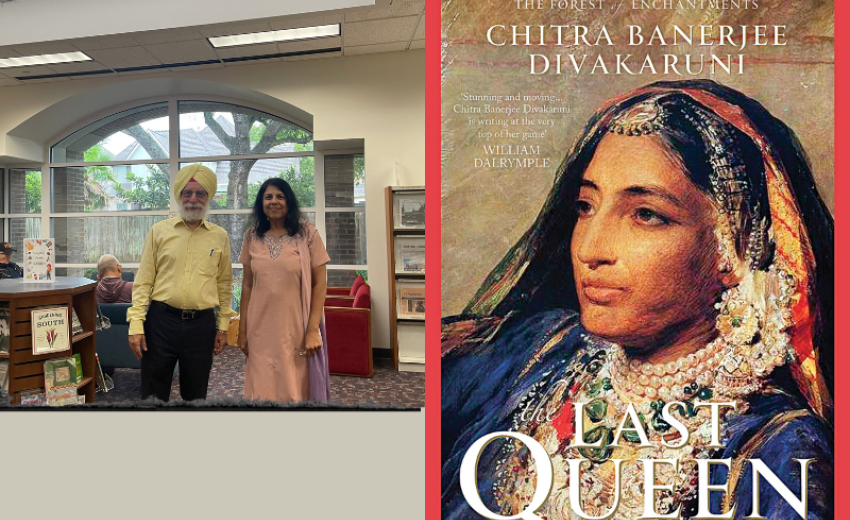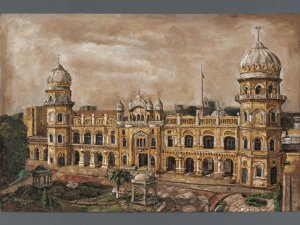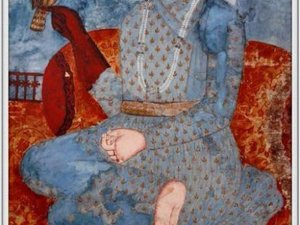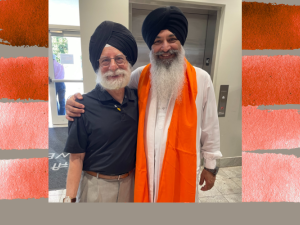This interview was conducted in Houston, where Chitra is settled and teaches Creative Writing at the University of Houston, where she is a Professor in the English Department.
Chitra Ji many thanks for taking time out of your busy schedule to meet with me to discuss your book The Last Queen.
- Q - You wrote the book The Last Queen during the Covid lockdown, when everyone was confined indoors, so how did you manage to carry out the research for the book?
A - I was lucky because through my university (University of Houston, where I teach) I was able to access their interlibrary loan system, and I was able to have many books sent to me. In addition, I accessed historical paintings and photographs that gave me a very good and accurate pictorial sense of life in Lahore Qila as well as in Maharaja Ranjit Singh's court.
- Q - I have heard about how you got attracted to the life of Rani Jindan, the main protagonist of your book. Could you share the details again?
A - I saw her image, the painting that I requested (and the publisher agreed) to be made into the cover of the Indian edition of Last Queen, at a Literature Festival in India. I was truly moved by her expression—this was a woman who had lived courageously and suffered—and yet had been largely ignored by history. I wanted everyone to know her story.
- Q - The first Chapter of the book is titled Guavas, where you have woven a very intimate look at childhood pranks. Considering so little written information is available on Rani's early life, how did you conceive it?
A - Having done my research, I knew that she grew up poor, and I knew the information about her family, including a father who was rarely there. I knew her love for her brother. I knew how her character would be when she grew up. I imagined the rest.
- Q -You grew up in Kolkata, and later moved to the USA, where you are settled now. So, how did you get exposure to the Sikh ethos that you have beautifully conveyed in the book?
A - I have several Sikh friends, including women I went to college with. I thus have great respect and fondness for the ethos. I researched more (especially Guru Nanak ji) in depth when I wrote this book.
- Q - Did you ever get a chance to visit the places that find detailed coverage in the book? Examples: Spence Hotel-Kolkata, Dehra Sahib and Lahore Fort – Lahore, Nasik, Banaras, and Kathmandu etc.
A - Except for Kolkata, where I visited the street where Spence Hotel was located, I did not. At first I was disappointed (it was Covid time--I could not travel). Then I realized it was a good thing. Those places have changed. I was able to feel the authentic older atmosphere better through the photographs and paintings.
- Q - Can you share your thoughts and emotions that gave birth to such a vivid description of Maharaja’s eyes (Page 58), knowing that he was blind on his left eye?
A - I am not sure I can explain it. I felt a lot for Maharaja Ranjit Singh. He was so brave. He had had to overcome so many obstacles and tragedies. He was a great hero, but also very genuine, a truly devoted Sikh. So much to admire—but also to sympathize with.
- Q - Please share your feelings on how in Chapter 9, you have very beautifully described how Jindan captured the heart of the Lion of Punjab, who was 40 years older to her?
A - That was one of my favorite parts to write, their love story. I was charmed by it, and by her intelligence and naturalness to which he responds. The scene points to both of their greatness. He could have asked her to be his concubine, but he respected her too much for that—so she becomes his last—and final—wife.
- Q - Your intimate portrayal of Rani Jinadan’s wedding to Maharaja Ranjit Singh is mesmerizing. Have you ever had a privy of attending Anand Karaj wedding to paint such an eloquent portrait?
A - I have Sikh friends, so I have been fortunate to attend Anand Karaj. I also researched it as it would have been if done in a home.
- Q - After the Maharaja’s death the empire was engulfed in a ruinous intrigue, with deaths of the successors in quick succession, how did it contribute to the downfall of the empire?
A - What really brought the great Sikh empire down (and this is the tragedy of all the great Indian kingdoms of the time) was infighting, greed among courtiers, treachery towards Rani Jindan, intrigue with the British, who promised power to the courtiers. They were so easily fooled by the British—in spite of Maharajah Ranjit Singh's warning to his court before he died. It made me very sad.
- Q - Reading the Chapter titled Treachery and about the role of Lal Singh, Rani’s amour turned traitor felt that a lot remains unsaid. What are your thoughts about it?
A - As I mentioned before, there was so much treachery all around Maharani Jindan. But I wanted to evoke the moment where she chose the good of her son and the kingdom over her own personal happiness. She could have eloped with Lal Singh and led a quiet, happy life. But she chose to embrace her queenly responsibility instead. She does make mistakes, especially in terms of battle strategy—but they come from a pure heart.
- Q - I found the Rani’s call to the nation on Page 267; “I am Rani Jindan, mother of Maharaja Dalip Singh, ------” very soul stirring and powerful. Please share your feelings about it.
A -I loved that moment—and it is true. It was so brave of her to go out to the army and ask for their help. The Khalsa Army loved her for her courage, and she loved them—until the end. Sometimes they fought and did not see eye to eye. (She was very stubborn, and so were they! They wanted to choose who she would marry if she did remarry. She would not accept that!)
- Q - Then on the last Page 346, when Dalip Singh steps into River Godavari to immerse ashes of Rani, he utters, “I will never forget what you taught me.” were very poignant and uplifting. How could you pack such emotive power into those few words?
A - As a mother, I had felt Jindan's love for her son. He was her final act of rebellion was that she wanted him to know and be proud of who he was, Maharajah of Punjab, and not who the British court wanted to reduce him to—Queen Victoria's "Black Prince." I think he realized how she had given up life in India --a huge sacrifice--and chosen exile for this reason. So, I expressed his appreciation of that love.
- Q - Again, on Page 351, with these words “even though he feels a bit like an imposter”; you again take it to new heights. What were your feelings?
A - I wanted to show how Jindan really won over the British in the end—a moral victory. Her son goes back to practicing the Sikh Religion, and he will fight the British for the rest of his life. His story after her death is tragic but noble. I wanted to show the beginnings of that transformation.
Conclusion
I hope many people will read the amazing story of Maharani Jindan, strong yet stubborn, loving yet hot-tempered, a truly complex and wonderful Queen and leader of her people. We have much to learn from her.
Thank you!
Chitra
Thanks, Chitra Ji again for taking time to talk about your great book on Rani Jindan. I am hoping that we will be a movie in future, based on your book.
